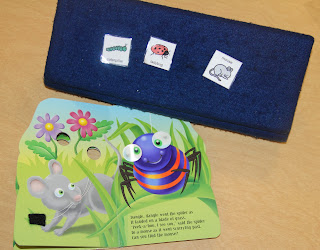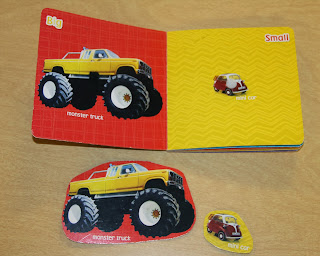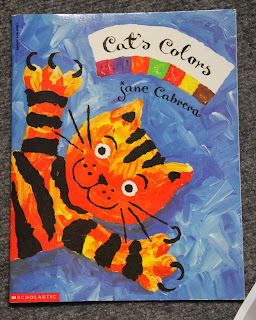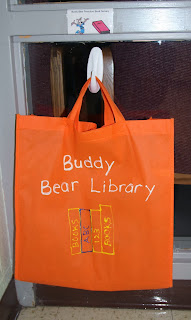I have started to get emails from teachers who are doing fabulous work. As teachers, we all know that there's not always a lot of recognition for the long hours, personal funding, and creative ingenuity that goes into our classrooms. So in the coming weeks, I'd like to share some of brilliant ideas and folks I've come across recently. Consider it Considerate Classroom's Consideration for Considerate Classrooms! :)
Today's guest blogger and recipient of "Thumbs Up Thursday" is Ms. Cris Wilson of Joyful Noise Preschool in Goodland, KS. Ms. Cris was referred to me by a colleague, Dixie Teeter. Here's what Dixie has to say.
"One of my preschool teachers Ms. Cris does this awesome social skill reinforcement that I thought I would share with you. It's called "Super Friend". When students show these skills spontaneously they get to wear a "SUPER CAPE".
I asked her to type up her thoughts behind the cape. I also took some pictures. Didn't know if this is something to share on Considerate Classroom? Reinforcing social skills is difficult. Let alone having a regular education teacher decide to do this on her own. I thought it was amazing."
Well, Dixie, I do too! I am delighted to share the idea here. Here is Ms. Cris Wilson's explanation of "Super Capes".
Here is my "thinking" behind the super friend capes I am using this year at Joyful Noise Preschool.
To be a super friend, a child must go beyond the typical expectation of responsibility. My example of responsibility is taking care of your own self.....you get toys out, you put them away. You make a mess, you clean it up. Being a super friend is when you have taken care of your own responsibilities and then you go and take care of someone else's because they made a poor choice and the job still needs to be done.
I say, "You are being a SUPER FRIEND because you ...". I also have them tell others why they are wearing the cape. Some of my non-observant children ask, "What's she got that on for?". I have the child tell them "I am a SUPER FRIEND because...". They are excited when parents arrive at pick-up time to tell Mommy "I got to be a SUPER FRIEND today and I chose the Hello Kitty cape". Then, Mommy can engage in language and find out why!!!!
Examples of when capes have been "earned" are picking up someone else's mess, helping a friend get things into their cubbie, doing something to help Ms. Cris when I needed "extra hands", acts of kindness when not being asked to do so, and comforting a sad friend.
When the bell rings and everyone is expected to be picking up all toys, none are eligible to earn a cape. The room has to be ready for circle time and all of us have to help. The capes are given at all other times.
To be a super friend, a child must show concern, care, and compassion for another. In essence, they "earn" the right to wear the cape when they have exhibited behaviors that are non-typical. My thinking is that if everyone acted as a super friend every day, the world would be a better place and there would not be a need for cape rewards!!! However, we are not there yet, so I am using this as a motivator for good choice behavior.
A child can lose the right to wear the super friend cape if they behave inappropriately while wearing it. (whine, aggression, poor choice, etc.)
They are allowed to choose which cape they want to wear. The capes are two-sided, and sometimes they start with one side and flip it over during the day.
The students have learned the language already. After 4 weeks of preschool, the student proclaims "I'm a super friend because I picked up toys when somebody didn't be responsible". Then, the child walks over to the hook where the capes are and waiting for me to put it on!!! They can wear it as long as they want (and remain eligible) and some have taken it off after only a few minutes of wearing it. We usually take them off before going out to the playground for safety reasons, but they can leave on under a jacket/coat if desired.
I am really excited about this plan. There's cooperation, responsibility, pride, self-esteem, personal worth and value, LANGUAGE, social skills, good choices, and just a whole lot of LOVE going on in the classroom. I am using it for all four classes. At this point, not all children have taken advantage of the opportunity, yet those who are motivated by this approach seem to "earn" a cape daily. Some of the things they are doing may seem minute to the outsider, but within the classroom, I see those as big steps to life!!!
I have a total of 6 capes right now. Have fabric to make more, just haven't had time to sit at the sewing machine to do so. I know I need 12 because there could come a time when all of my class is a SUPER FRIEND!!!
Then, Ms. Cris signs off with a statement to Dixie that I wish more teachers could honestly say.
Thanks! You know I appreciate how you always notice change and good things in this classroom!So on this "Thumbs Up Thursday", two thumbs up goes to Ms. Cris Wilson and her Super Friend Cape idea!
I'd love to make "Thumbs Up Thursday" a regular occurrence at Considerate Classroom. If you or someone you know is doing excellent work in the classroom, just send me an email with the classroom idea, your name, and some photos.














































